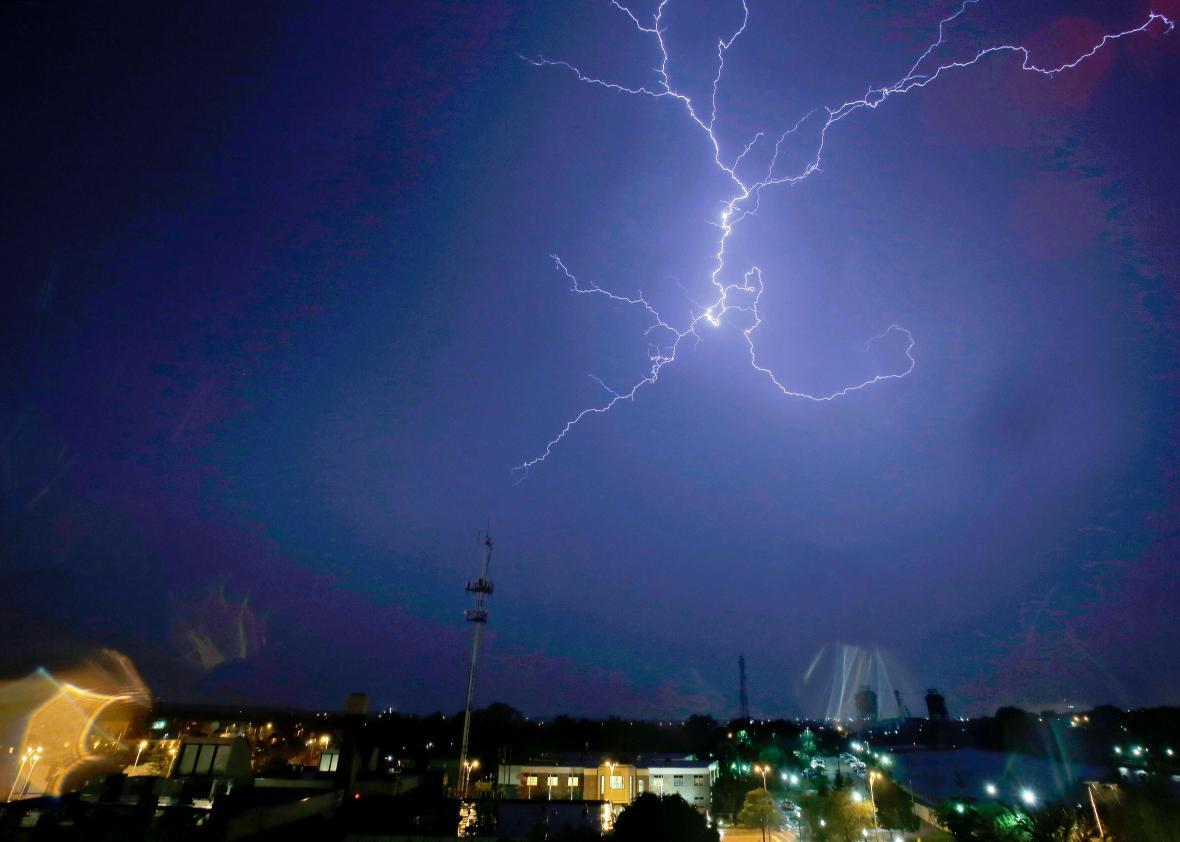The video you’re about to watch is gloriously beautiful. But more importantly, it’s telling the story of science.
The tornado-producing thunderstorm in the visualization looks like it’s bubbling. That’s close to what’s actually happening—during particularly intense thunderstorms like this one, the atmosphere is extremely unstable. Warm spring afternoons heat up the ground, and since hot air is less dense than cooler air, the surface air wants to rise, quickly. Add in a bit of wind shear at higher levels and voila, you’ve got yourself a rotating thunderstorm capable of producing a tornado.
Meteorologists are getting closer to understanding exactly how and why this happens, but there are still a lot of unanswered questions. Enter David Bock, at the National Center for Supercomputing Applications at the University of Illinois, who made the visualization you see above. Bock told Slate he intended to “simulate how light rays move through the atmosphere” while “remaining faithful to the actual data itself”—all with the goal of increasing scientific understanding.
Using weather data from University of Wisconsin meteorologist Leigh Orf, Bock set out to make his simulation with one primary thought in mind: “If it’s modeling a thunderstorm, it should look like a thunderstorm.”
The supercomputing network Bock used to make the simulation, a $121 million partnership between more than a dozen universities and the National Science Foundation, is among the most powerful computing resources in the world. The simulation is at 50 meter resolution—about 60 times better than the best operational weather models currently operate.
Bock, who has a degree in electrical engineering as well as a master of fine arts, says each of the 800 frames of the visualization took five to six hours to render. The whole job—100 terabytes worth—would have taken five-and-a-half months to complete on a very fast personal computer. But the supercomputer Bock used was able to do the whole thing in an afternoon.
Simulations like this one are tools to help scientists do their jobs better. Bock and Orf wrote that the overall goal of their project was to “understand why some supercells produce devastating tornadoes, while other apparently similar storms produce weak tornadoes or no tornadoes at all.” By creating a simulation that’s nearly indistinguishable from what a meteorologist would see on the plains of Nebraska, Bock said it removes one extra barrier to understanding more about what’s happening.
If you can accurately simulate a tornado—to stunning effect—it probably means you have a pretty good understanding of how and why they form. That’s a great practical application to something that just happens to be astoundingly beautiful.
